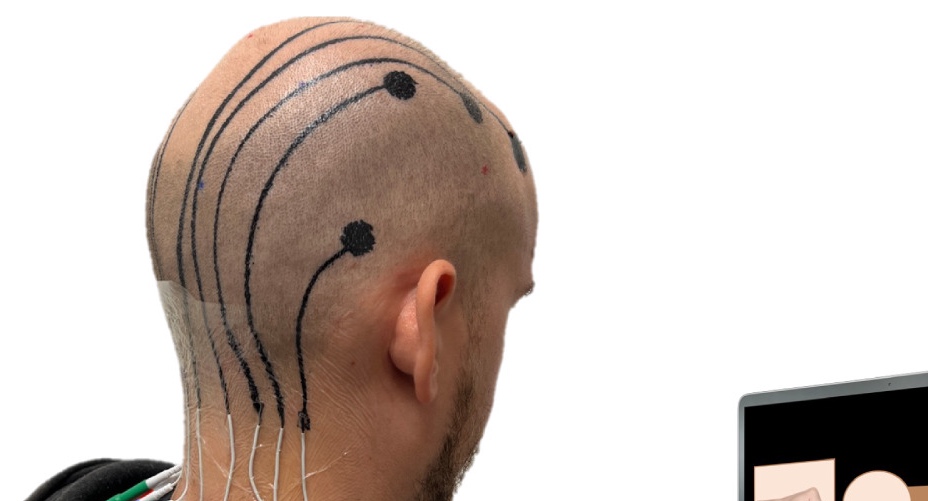
From Texas comes a bio-technology interface nearly impossible to believe: tattoos that double as brain sensors.
The engineers of this technology explain how for almost 100 years, the electroencephalogram (EEG) has been the standard method for monitoring brain activity, but along with being prohibitive to long or dense hair, it loses efficacy after about 6 hours.
The tattoos by contrast are applied via a spray-on, biocompatible gel made of conductive polymer that’s filled with hundreds of tiny sensors that read brain activity like a standard EEG.
The benefits are legion—including percolating effortlessly through hair and 24-hour effectiveness.
“Our innovations in sensor design, biocompatible ink, and high-speed printing pave the way for future on-body manufacturing of electronic tattoo sensors,” Nanshu Lu, one of the lead researchers at the University of Texas at Austin who designed the technology, told ZME Science. “It has broad applications both within and beyond clinical settings.”
The application is remarkably simple. The positions where the EEG-tattoo points should sit are mapped out by a computer, then a specialized inkjet printer applies the ink which dries within minutes into the tattoo.
There’s no discomfort, no long hours needed to apply each individual EEG which must be connected with wires to a bulky machine, and no need to reapply anything within the same day.
Lu and her colleagues tested the EEG-tattoo against a traditional EEG and found that by 6 hours, the traditional electrodes applied with the gel began delivering weaker and fainter signals as the gel dried out, while one third stopped working altogether.
The EEG-tattoo spray had not lost any signal 24 hours after the first application.
ALSO CHECK OUT: Device from MIT Startup Helps People Fall Asleep–Putting Your Mind on ‘Do Not Disturb’
Taking their project further, and with a little tweak to the ink mixture, the researchers were also able to spray on the ‘wires’ which were able to transmit data effectively to a small collection device.
“E-tattoos represent a new frontier in wearable technology,” says Lu. “This is just the beginning of what we can achieve.”
ZME noted that athletes are already using similar technologies on their torsos to monitor athletic performance.
MORE BLENDING OF MACHINE AND MAN: Incredible Internal Cochlear Implants on the Way as Massachusetts Engineers Overcame All Obstacles
“Our study can potentially revolutionize the way non-invasive brain-computer interface devices are designed,” added José Millán, another co-author. “By printing sensors directly onto the scalp, e-tattoos could eliminate the need for headsets altogether, making these devices more accessible and easier to use.”
SHARE This Wild Futuristic Bio-Tech With Your Friends On Social Media…



















